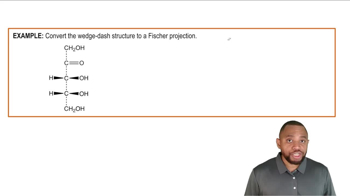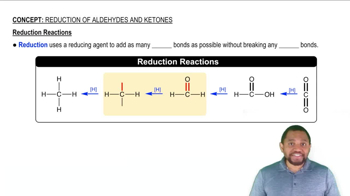Textbook Question
Name the functional groups present in aldoses.
22
views
 Verified step by step guidance
Verified step by step guidance



Name the functional groups present in aldoses.
How are the following pairs of carbohydrates, shown in a Fischer projection, related to each other? Are they structural isomers, enantiomers, diastereomers, or epimers?
(a) <IMAGE>
Draw the Fischer projection of the C3 epimer of d-glucose. Compare your structure with those in Table 6.1 and give the name of this compound.
Will the following carbohydrates produce a positive Benedict’s test?
(a) d-glucose
Will the following carbohydrates produce a positive Benedict’s test?
(b) lactose
The glycosidic bond in a disaccharide was determined to be α (1→6) . Hydrolysis of the disaccharide produced one galactose and one fructose. Draw the structure of the disaccharide.